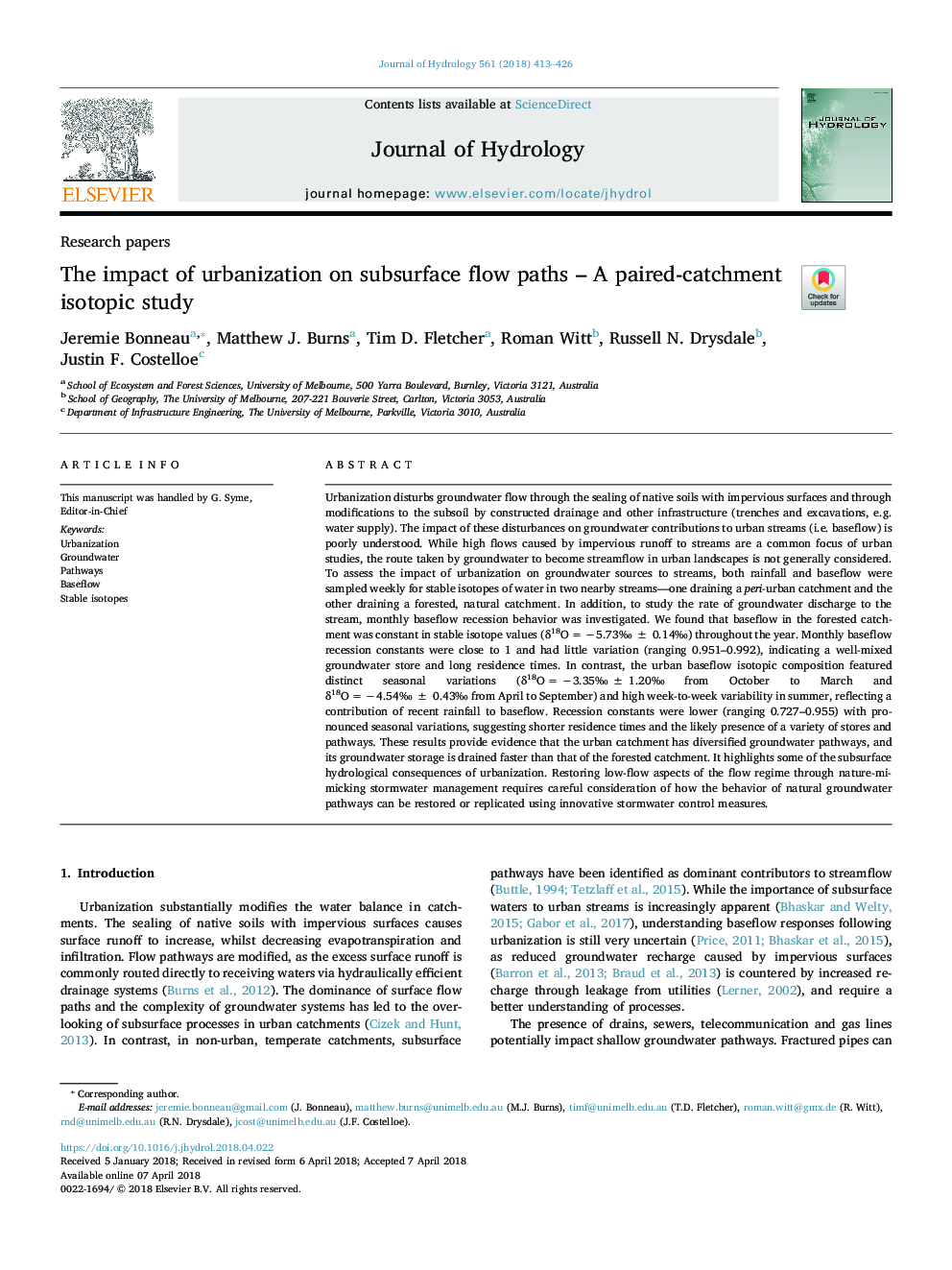| Article ID | Journal | Published Year | Pages | File Type |
|---|---|---|---|---|
| 8894794 | Journal of Hydrology | 2018 | 14 Pages |
Abstract
Urbanization disturbs groundwater flow through the sealing of native soils with impervious surfaces and through modifications to the subsoil by constructed drainage and other infrastructure (trenches and excavations, e.g. water supply). The impact of these disturbances on groundwater contributions to urban streams (i.e. baseflow) is poorly understood. While high flows caused by impervious runoff to streams are a common focus of urban studies, the route taken by groundwater to become streamflow in urban landscapes is not generally considered. To assess the impact of urbanization on groundwater sources to streams, both rainfall and baseflow were sampled weekly for stable isotopes of water in two nearby streams-one draining a peri-urban catchment and the other draining a forested, natural catchment. In addition, to study the rate of groundwater discharge to the stream, monthly baseflow recession behavior was investigated. We found that baseflow in the forested catchment was constant in stable isotope values (δ18Oâ¯=â¯â5.73â°â¯Â±â¯0.14â°) throughout the year. Monthly baseflow recession constants were close to 1 and had little variation (ranging 0.951-0.992), indicating a well-mixed groundwater store and long residence times. In contrast, the urban baseflow isotopic composition featured distinct seasonal variations (δ18Oâ¯=â¯â3.35â°â¯Â±â¯1.20â° from October to March and δ18Oâ¯=â¯â4.54â°â¯Â±â¯0.43â° from April to September) and high week-to-week variability in summer, reflecting a contribution of recent rainfall to baseflow. Recession constants were lower (ranging 0.727-0.955) with pronounced seasonal variations, suggesting shorter residence times and the likely presence of a variety of stores and pathways. These results provide evidence that the urban catchment has diversified groundwater pathways, and its groundwater storage is drained faster than that of the forested catchment. It highlights some of the subsurface hydrological consequences of urbanization. Restoring low-flow aspects of the flow regime through nature-mimicking stormwater management requires careful consideration of how the behavior of natural groundwater pathways can be restored or replicated using innovative stormwater control measures.
Related Topics
Physical Sciences and Engineering
Earth and Planetary Sciences
Earth-Surface Processes
Authors
Jeremie Bonneau, Matthew J. Burns, Tim D. Fletcher, Roman Witt, Russell N. Drysdale, Justin F. Costelloe,
